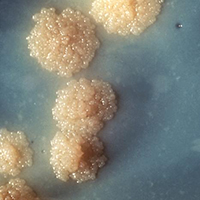Factors associated with unfavourable treatment outcomes in people with HIV-associated tuberculosis in Armenia, 2015 to 2019

All claims expressed in this article are solely those of the authors and do not necessarily represent those of their affiliated organizations, or those of the publisher, the editors and the reviewers. Any product that may be evaluated in this article or claim that may be made by its manufacturer is not guaranteed or endorsed by the publisher.
Authors
To evaluate factors associated with tuberculosis (TB) treatment outcomes in human Immunodeficiency Virus-Associated (HIV) TB patients in Armenia, we conducted a nation-wide cohort study using routine programmatic data of all HIV-associated TB patients receiving TB treatment with first- or second-line drugs from 2015 to 2019. Data were obtained from the TB and HIV electronic databases. We analysed occurrence of the combined unfavourable outcome (failure, lost to follow-up, death and not evaluated) and death separately, and factors associated with both outcomes using Cox regression. There were 320 HIV-associated TB patients who contributed a total of 351 episodes of TB treatment. An unfavourable TB treatment outcome was registered in 155 (44.2%) episodes, including 85 (24.2%) due to death, 38 (10.8%) lost to follow up, 13 (3.7%) failure and 19 (5.4%) not evaluated. Multivariable analysis showed that receipt of Antiretroviral Treatment (ART) [ART start before TB treatment: adjusted hazard ratio (aHR)=0.3, 95% confidence interval (CI): 0.2-0.5, aHR=, 95% CI:, 95% CI:, 95% CI:TB meningitis (aHR=4.4, 95% CI: 1.6-11.9) increased the risk. The risk of death was affected by the same factors as above in addition to the low BMI (aHR=2.5, 95% CI: 1.3-4.5) and drug resistance (aHR=2.3, 95% CI: 1.0-5.4). In the subsample of episodes receiving ART, history of interruption of ART during TB treatment increased the risk of unfavourable outcome (aHR=2.1 95% CI: 1.2-3.9), while ART start during TB treatment was associated with lower risk of both unfavourable outcome (within first 8 weeks: aHR: 0.5, 95% CI: 0.3-0.9; after 8 weeks: aHR: 0.4, 95% CI: 0.2-1.0) and death (within first 8 weeks: aHR: 0.2, 95% CI: 0.1-0.4; after 8 weeks: aHR: 0.1, 95% CI: 0.01-0.3). The rates of unfavourable TB treatment outcomes, and death in particular, among HIV-associated TB patients in Armenia are high. Our findings emphasize the protective effect of ART and the importance of proper management of cases complicated by drug resistance or meningitis.
National Center of Pulmonology, State Non Commercial Organization of the Ministry of Health, Abovyan
National Center for Infectious Diseases, Yerevan
How to Cite
PAGEPress has chosen to apply the Creative Commons Attribution NonCommercial 4.0 International License (CC BY-NC 4.0) to all manuscripts to be published.
Similar Articles
- Emilia Privitera, Francesco D'Abrosca, Giuseppe Gaudiello, Marta Lazzeri, Angela Bellofiore, Pamela Frigerio, Martina Santambrogio, Physiotherapist involvement in the pandemic era: a Lombardy region survey , Monaldi Archives for Chest Disease: Vol. 91 No. 3 (2021)
- Oleg Gaisenok, Oksana Drapkina, Gender differences in the detection of carotid atherosclerosis: DUPLEX registry cross-sectional study results , Monaldi Archives for Chest Disease: Vol. 92 No. 4 (2022)
You may also start an advanced similarity search for this article.

 https://doi.org/10.4081/monaldi.2021.1648
https://doi.org/10.4081/monaldi.2021.1648




